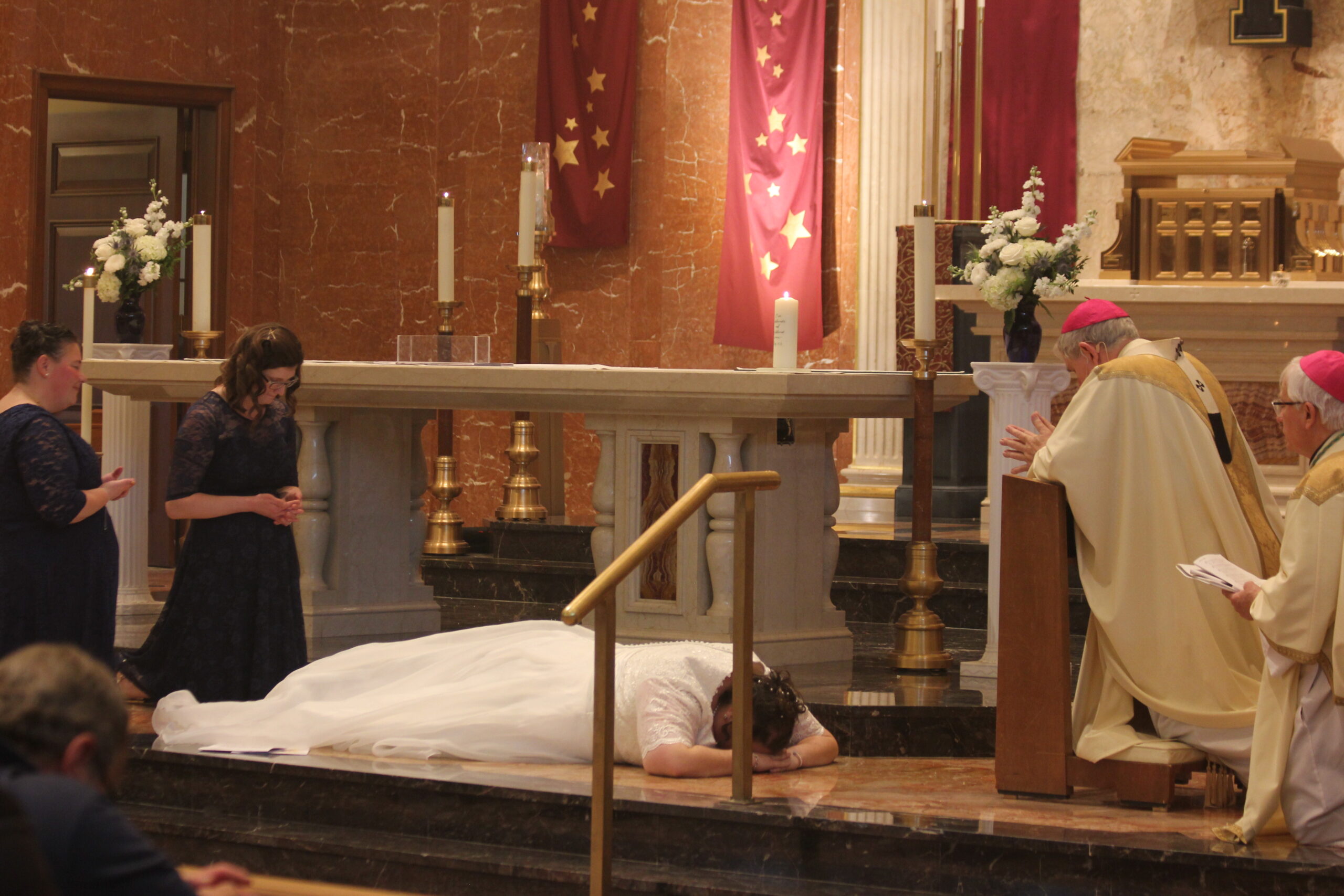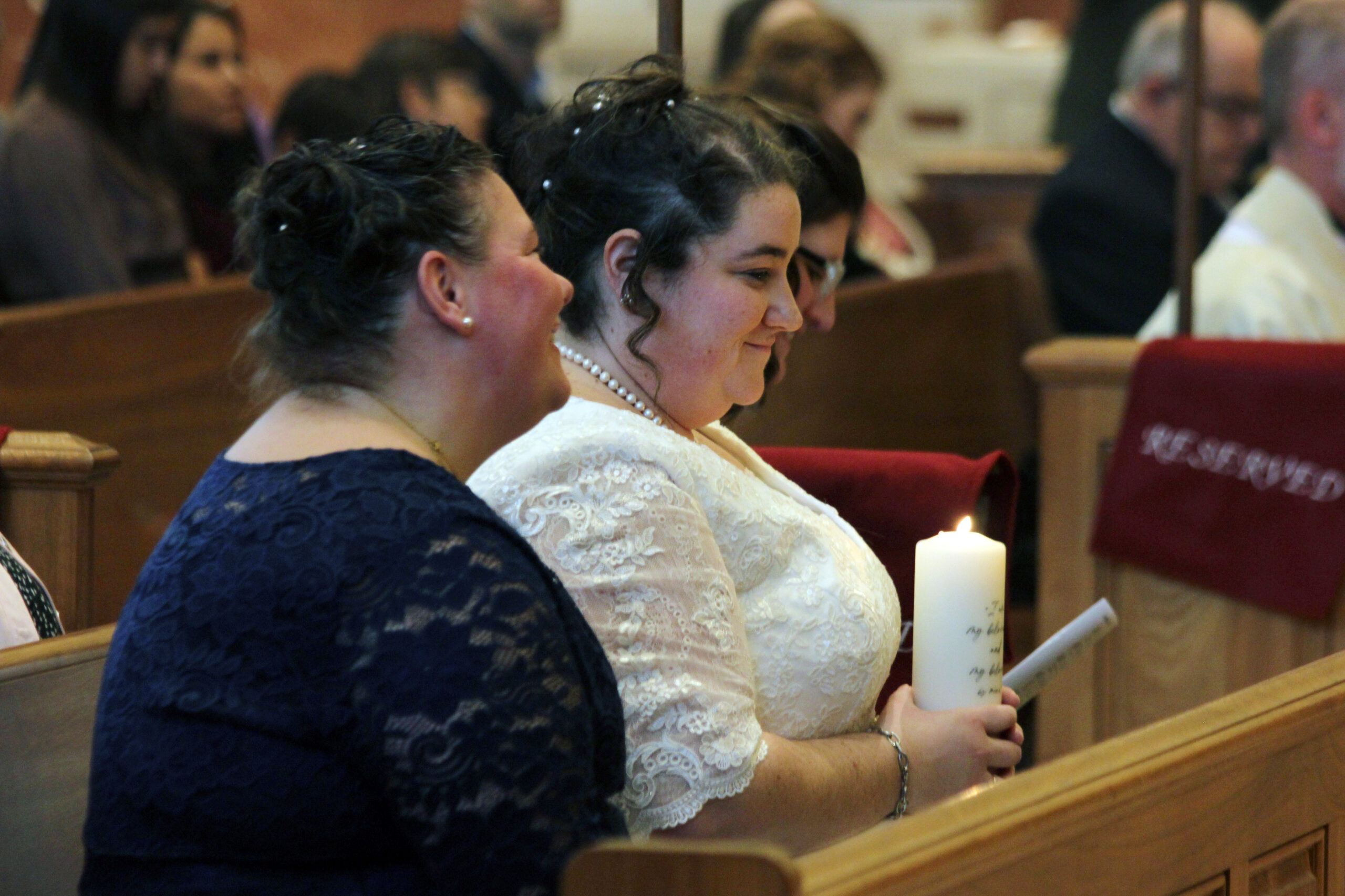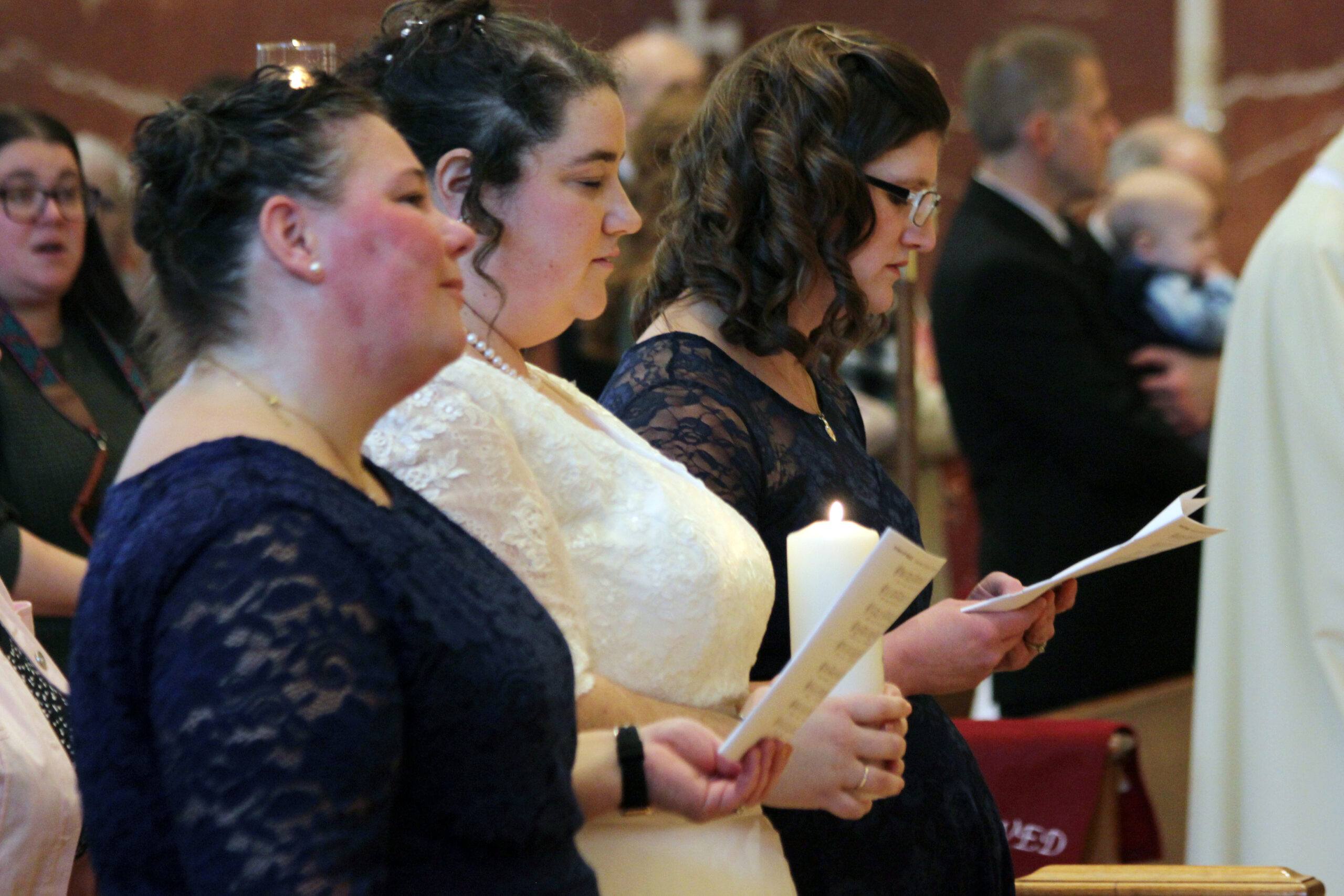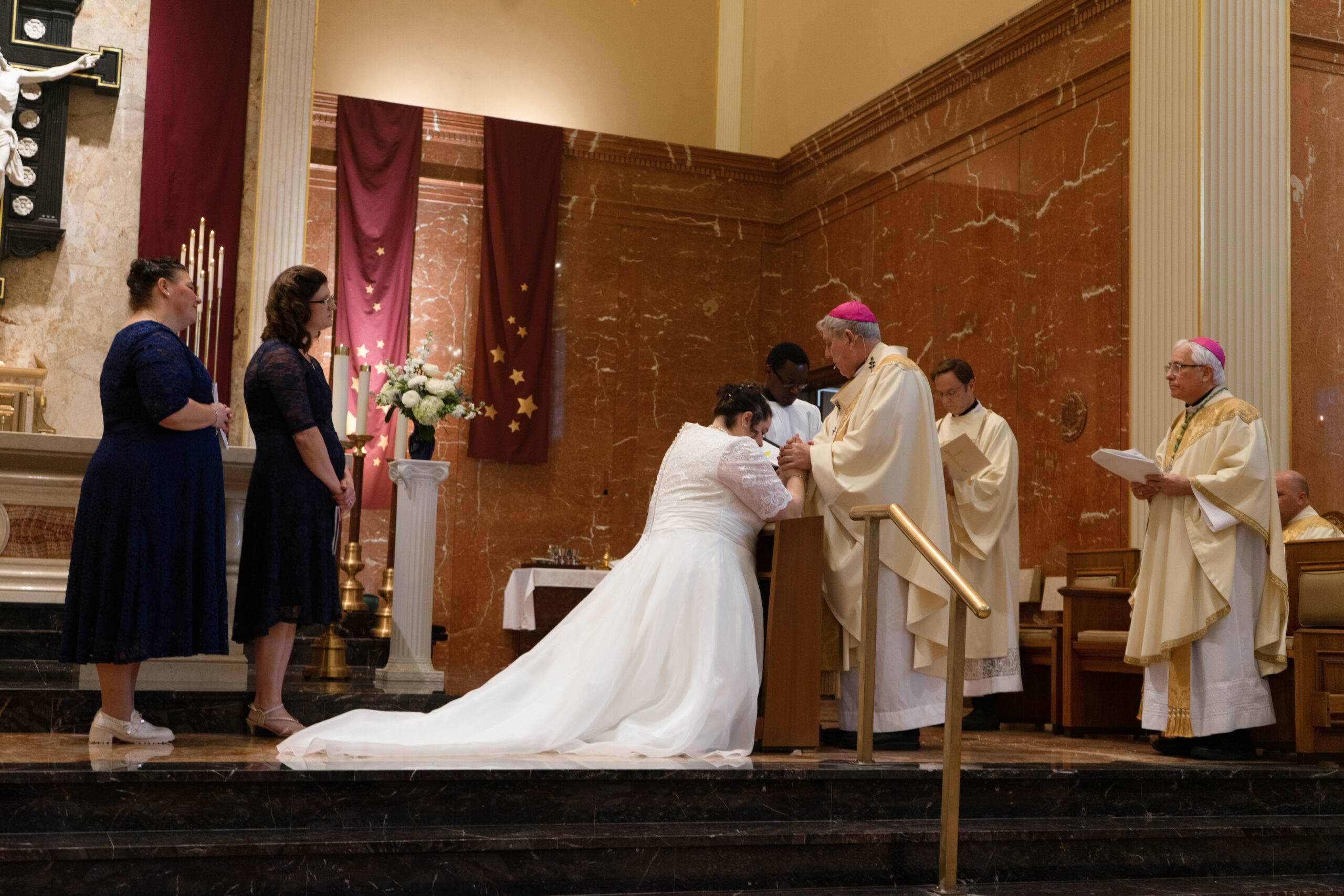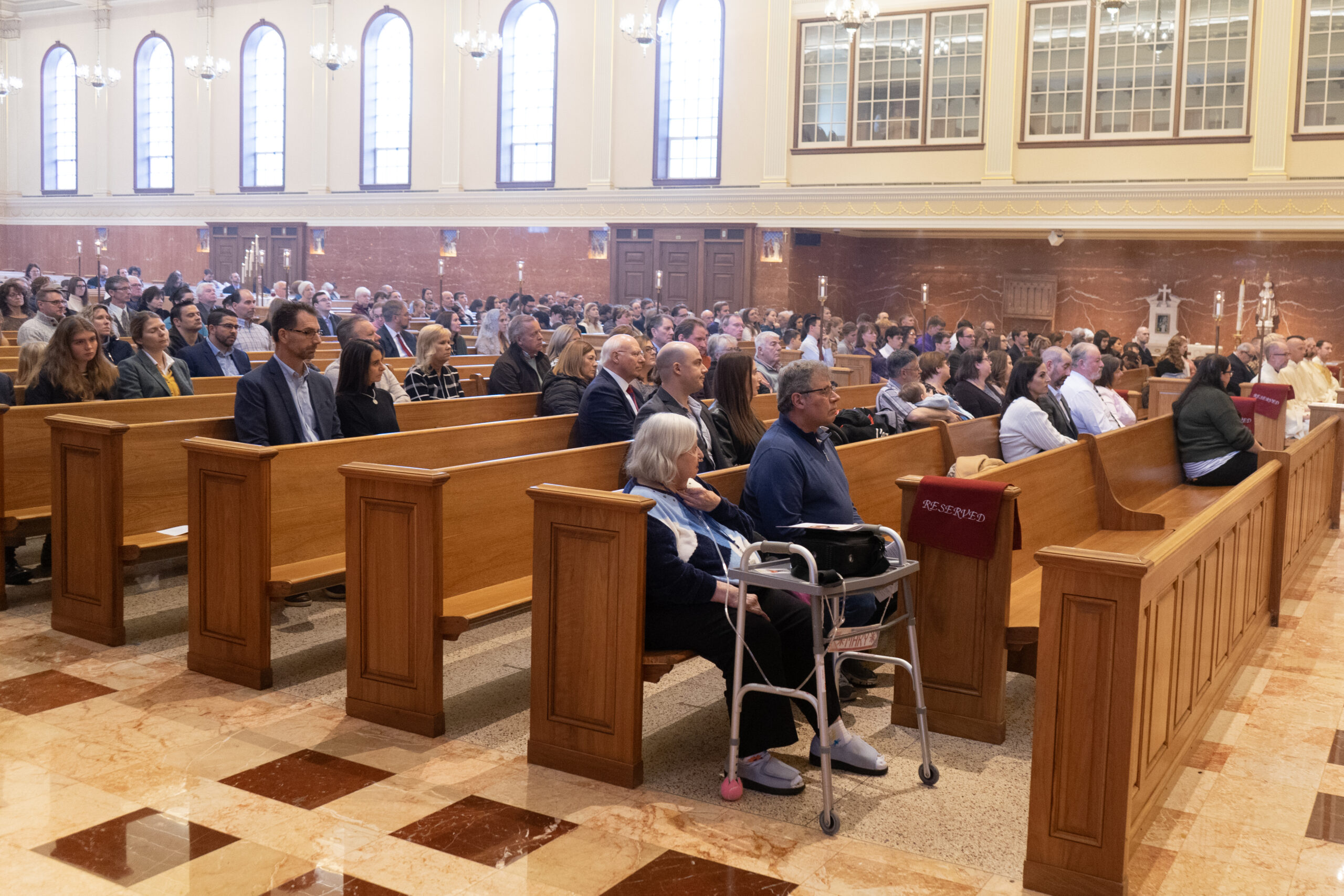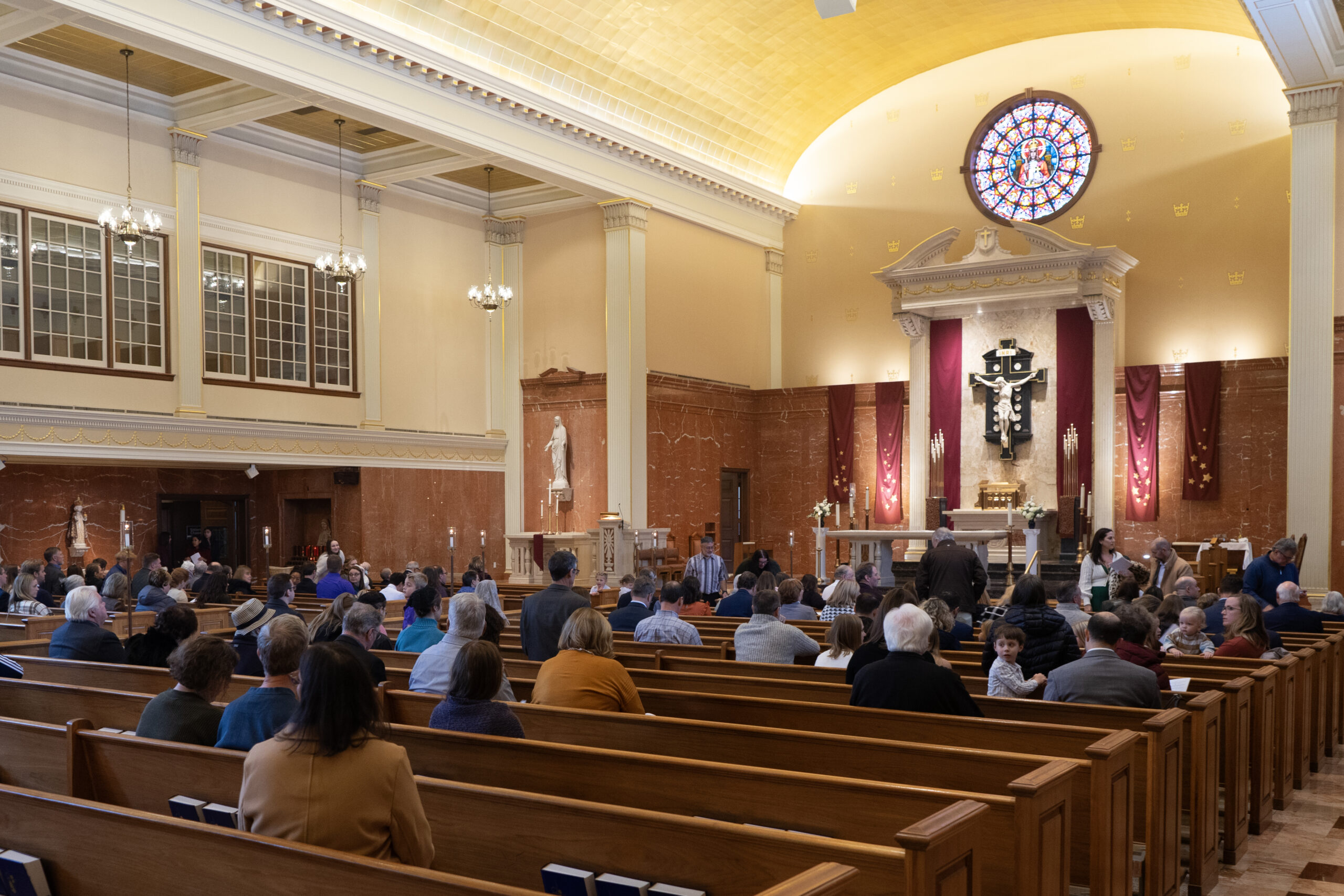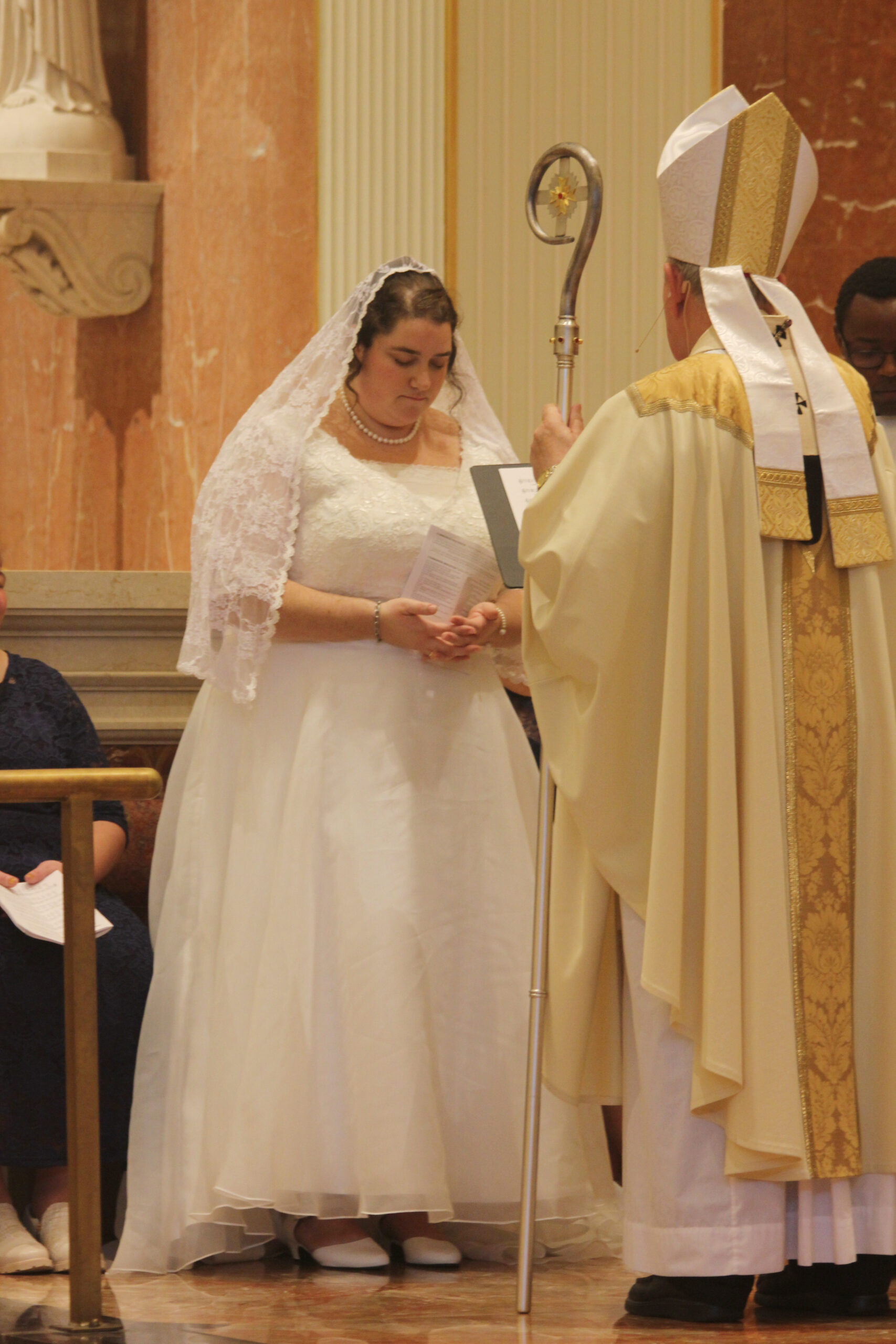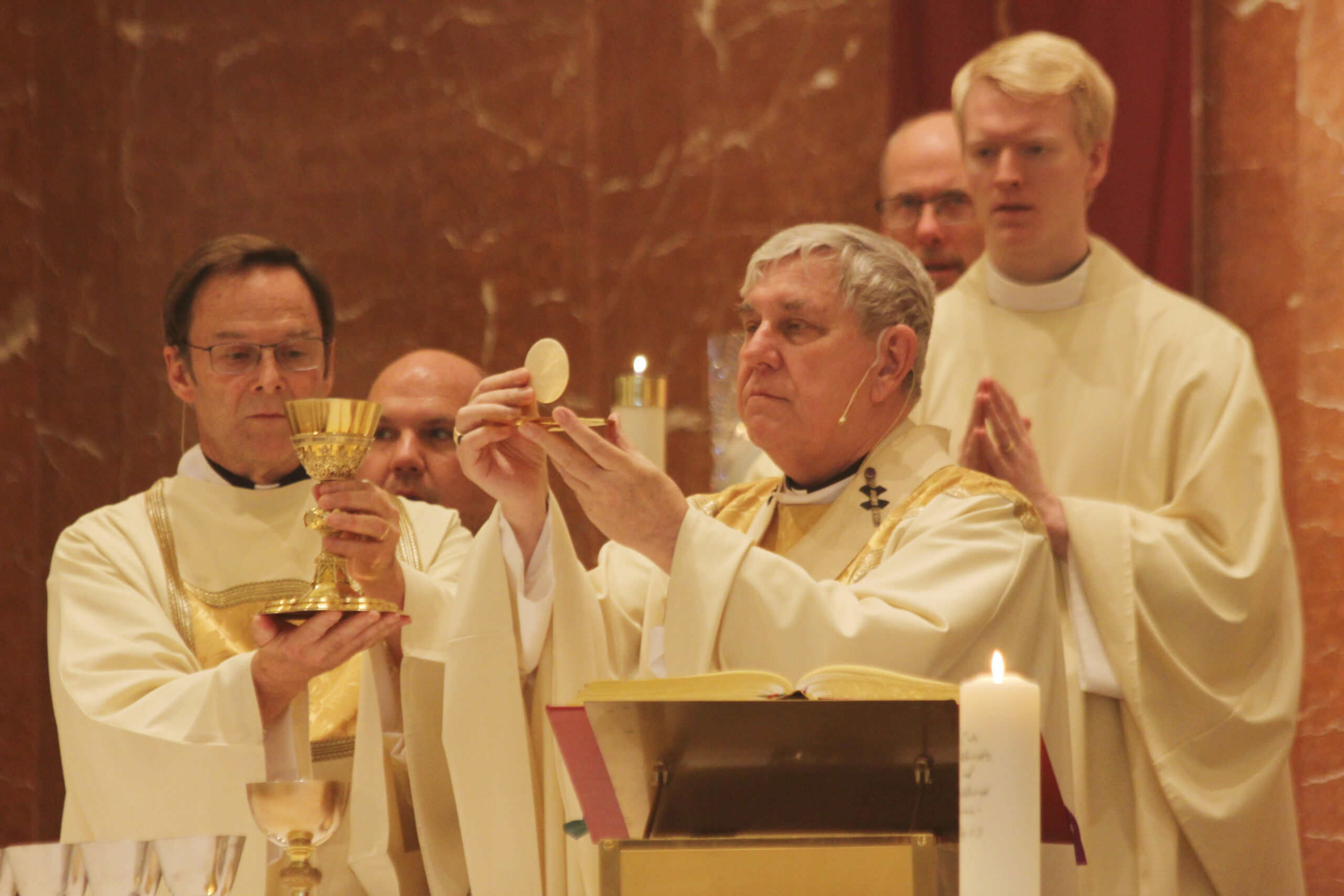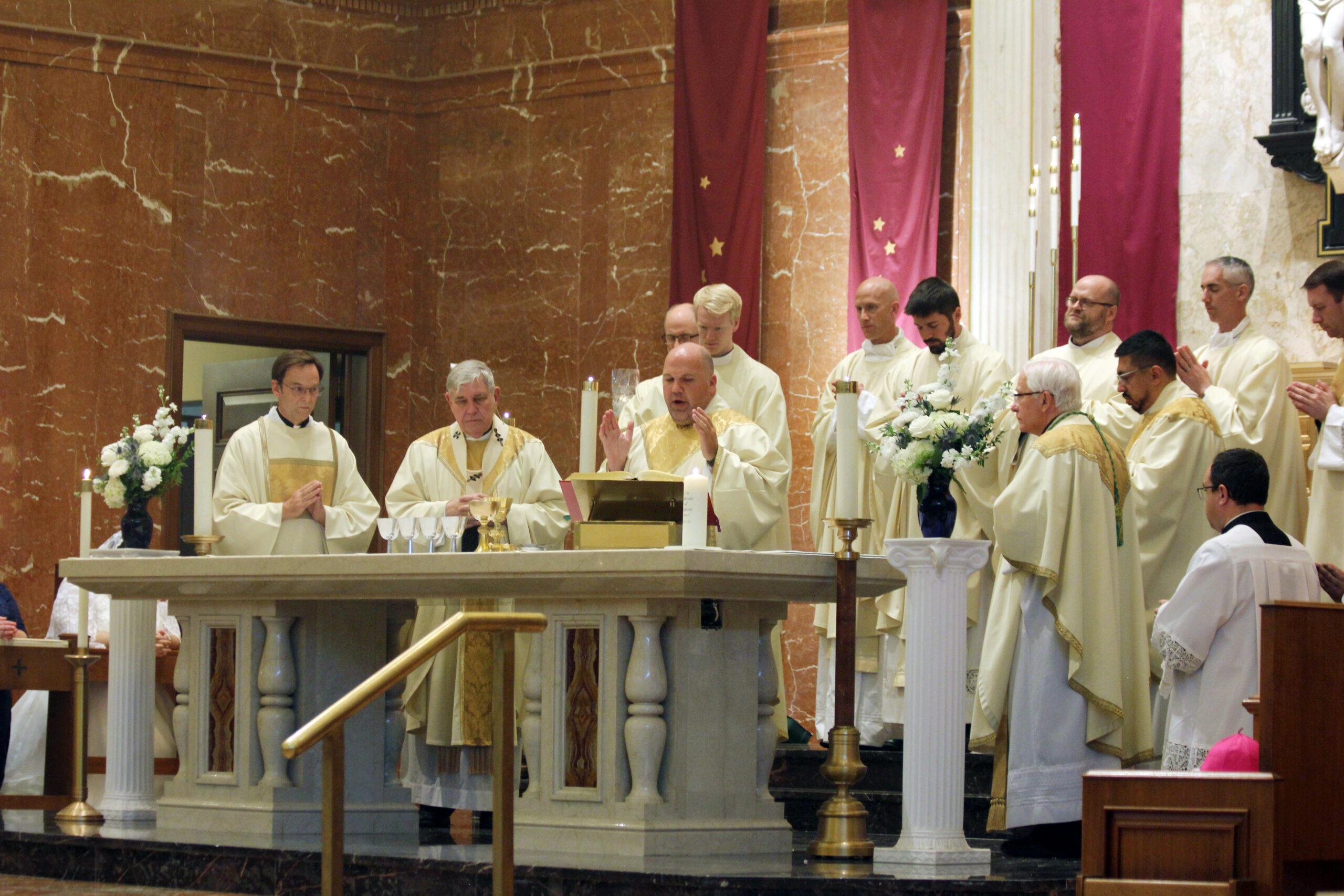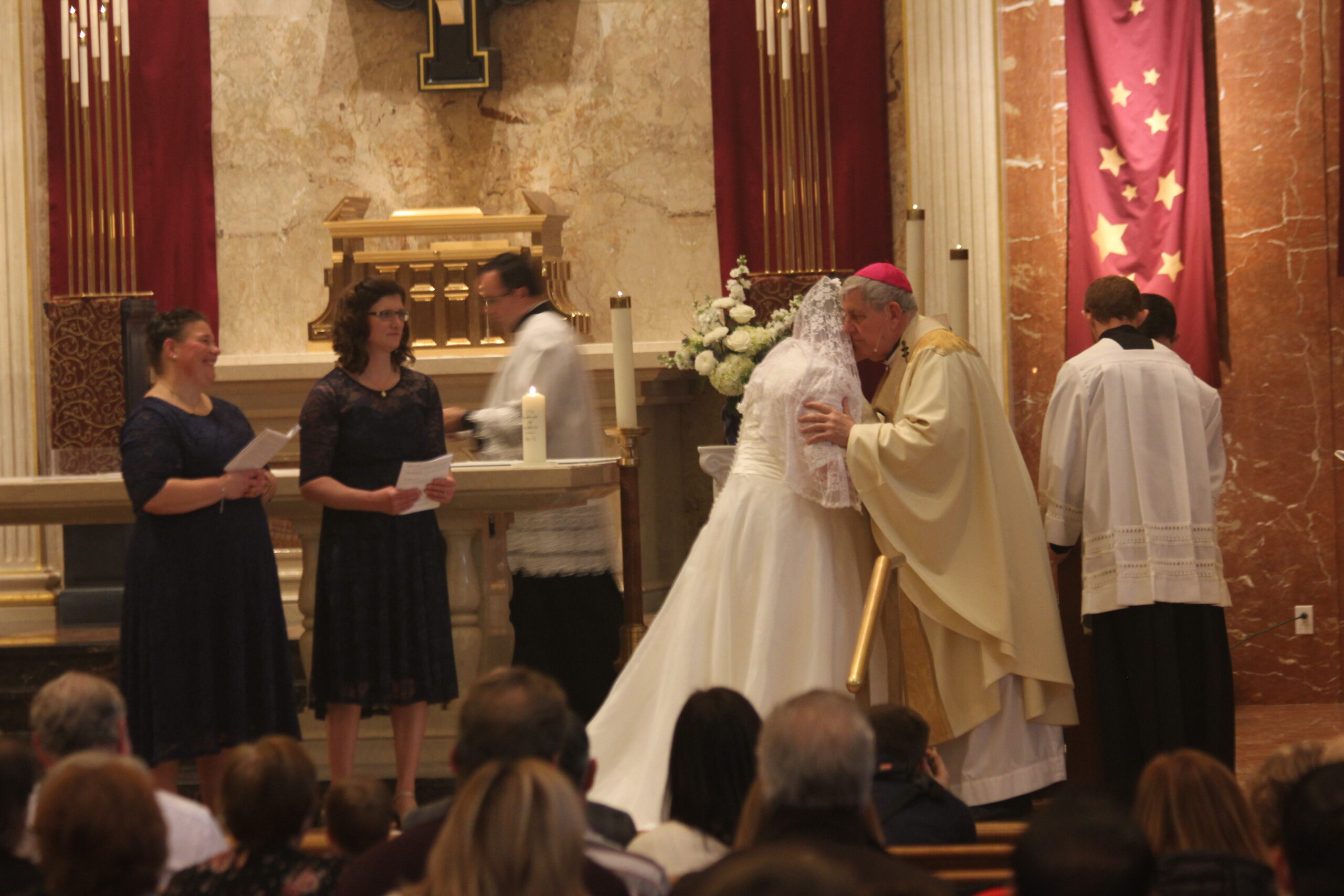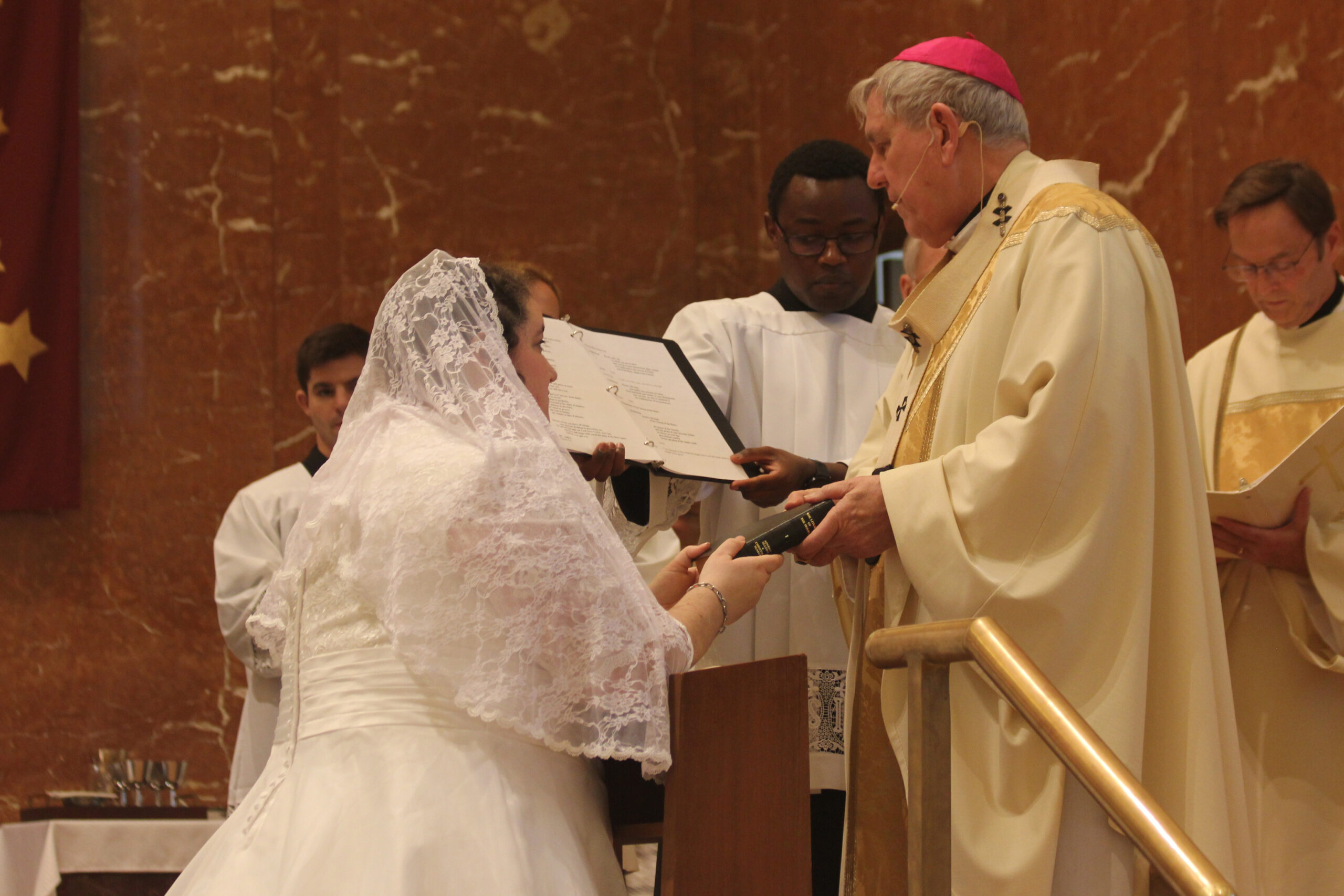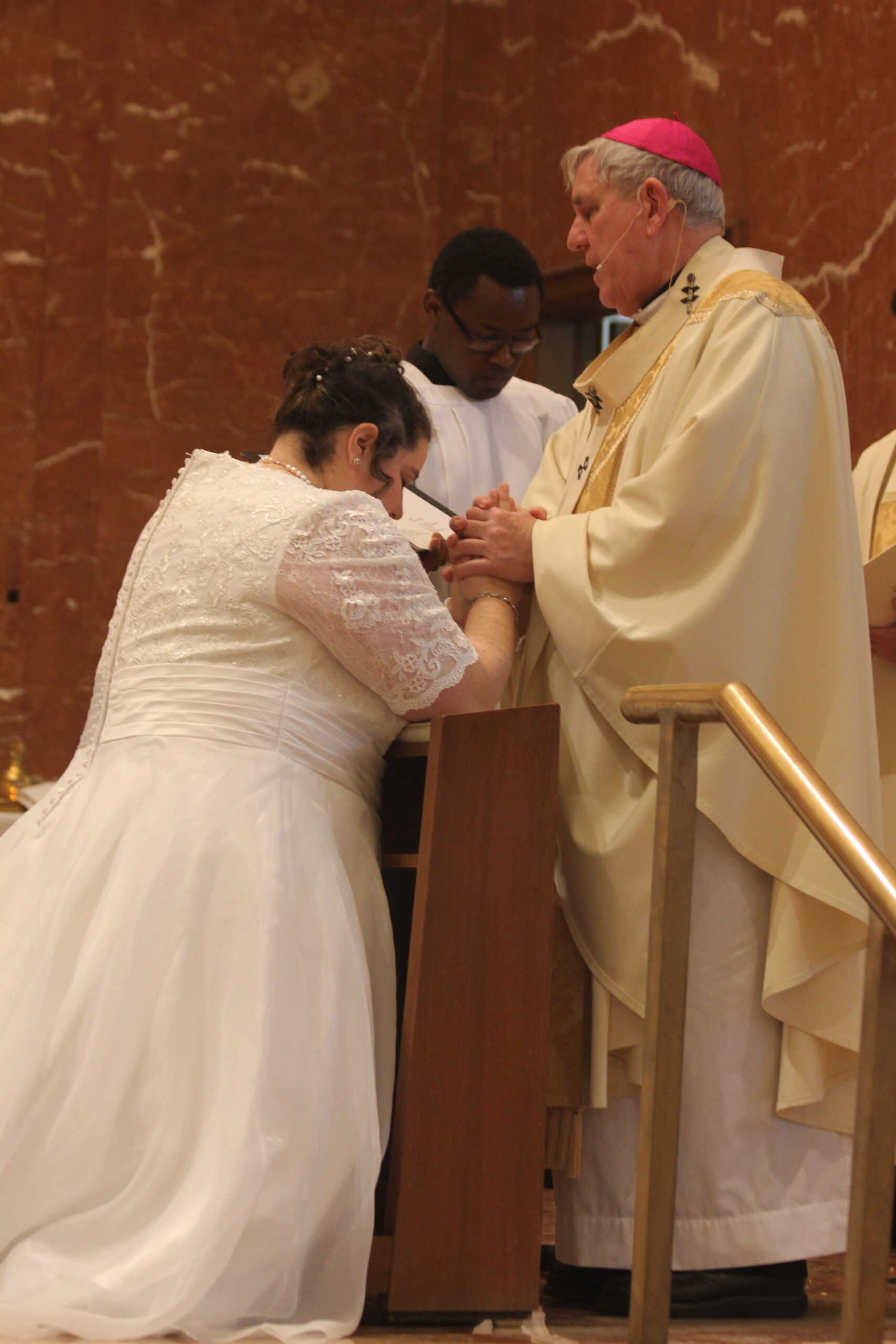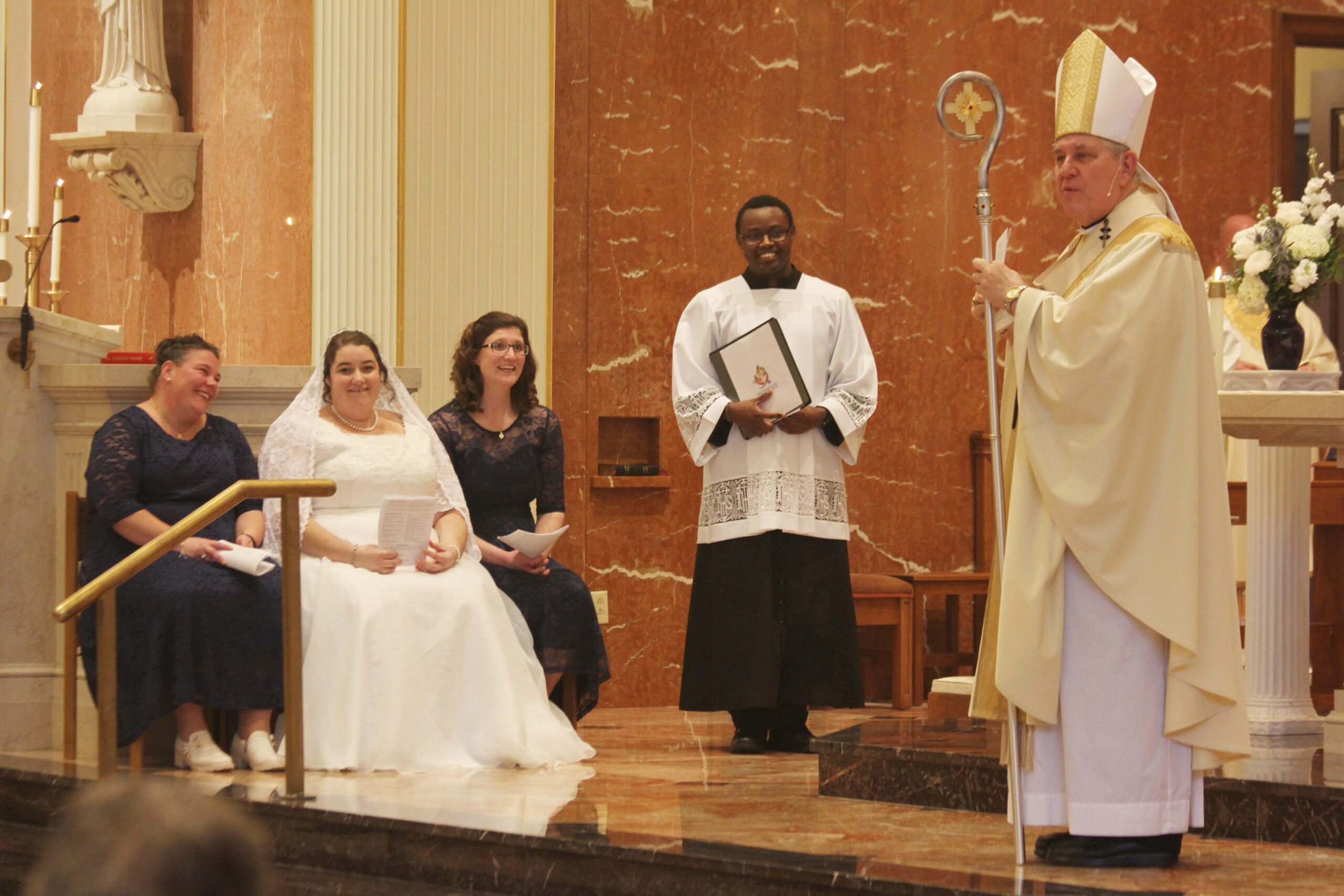
Sarah Daszczuk (seated in white dress) entered into the vocation of a Consecrated Virgin Living in the World during a Mass and rite celebrated by Archbishop Jerome Listecki in November. (Photo by Kristen Kubisiak)
A Wauwatosa woman recently celebrated her institution into the most ancient, recognized form of consecrated life in the Catholic Church — the vocation of a consecrated virgin living in the world.
Sarah Daszczuk, who has served in Milwaukee-area parishes for the past 11 years in both youth ministry and adult formation, was formally instituted Sunday, Nov. 26, when Archbishop Jerome E. Listecki celebrated Mass and conducted the Rite of Consecration at Christ King Parish, Wauwatosa.
A consecrated virgin is a never-married woman who dedicates her perpetual virginity to God and is set aside as a sacred person who belongs to Christ in the Catholic Church. Upon consecration, she is betrothed mystically to Christ and is dedicated to the service of the Church while remaining in a public state of life — holding a job, providing for her own needs and living much like everyone else.
Daszczuk is a parishioner of Christ King Parish, as well as the director of formation and discipleship for youth in the Wauwatosa tri-parish faith formation program of Christ King, St. Bernard and St. Pius X. Her work in this capacity has been “trailblazing,” according to Fr. Philip Bogacki, Pastor of Christ King and St. Bernard, as well as Moderator of the Curia and Vicar General for the Archdiocese of Milwaukee.
“We are very proud of Sarah,” said Fr. Bogacki, who was one of 10 concelebrants at the Mass of her consecration. “She is an exceptional leader in youth ministry, and the youth ministry she developed in our parishes is frequently held up as a model for others to form disciples of our children. She is also an amazing part of our staff and our parishes.”
Daszczuk, who grew up in St. Therese of Lisieux Parish, Kenosha, and attended the parish school, has always been drawn to sacred things. She recalled delighting in one of her early church responsibilities — replacing altar candles at St. Therese, where students attended Mass daily.
“I took it very seriously — as a 10-year-old girl would,” Daszczuk recalled. “They taught me how to put tape on the bottom of the candles and position them so they’d stay solidly in their bases. I loved being a part of the church in that way and having that role — as little as it was.”
But then she grew up.
In middle and junior high school, Daszczuk went through a phase of questioning her faith and finding it burdensome — as young people often do — but as she prepared for Confirmation, she found her heart opening to the Lord’s call. By God’s providence, she said, a youth minister invited her to participate on his team and work with other young people in the parish. She wasn’t expecting much from the experience, but what she found reignited her.
“I discovered something I didn’t know I wanted,” she said. “I found a community of people who gave me the space and freedom to love the Lord and explore my faith; I found an environment where it was OK to love the Lord and OK to ask questions; I found authentic friendships.”
Daszczuk started participating in Bible study and youth groups, and spent multiple evenings a week at her parish. Then when she went on her Confirmation retreat, and she experienced a radical conversion of heart.
“I went to confession with the mindset of an adult. It wasn’t just listing off sins,” she said. “I realized that I had some baggage I needed to talk about. I actually need to do this and it’s really hard.”
In that moment, she heard the Gospel proclaimed in a profound way that pierced her heart.
“Jesus hung on a cross for me — he thought that I was worth that suffering. And if that’s true, my only rational response is to be all in, to give myself radically in return,” she said. “If I didn’t believe it, I might as well walk away. That was the beginning of the call in my life.”
Call to Consecrated Life
Daszczuk went on to earn a bachelor’s degree in theology and youth ministry from Benedictine College in Atchison, Kansas, and her master’s degree in evangelization and catechesis from the Augustine Institute in Denver. Although it was during this time that she first felt the call to the vocation of consecrated virgin, she set it aside for several years because of her age, and the difficulty finding information about it.
Although the oldest recognized form of consecrated life in the Church — with Ss. Lucy, Agnes and Philomena the earliest consecrated virgins and martyrs — the way of life was abandoned for historical and cultural reasons during the Middle Ages with the rise of religious orders. The vocation was revitalized and made available again through the Rite of Consecration to a Life of Virginity for Women Living in the World in 1970 at the request of the Second Vatican Council.
“It’s a new-again vocation,” Daszczuk said, “So, initially, I had a hard time finding anyone to talk to about it. I didn’t know where to go, or what to do, and many priests didn’t know either.”
Then after she returned to Wisconsin, she participated in the “Called and Gifted” discernment process in the Archdiocese of Milwaukee and prayed over it once again. With a renewed commitment, she came to the Archdiocese of Milwaukee Office of Vocations and began her formal formation process in 2018.
According to Fr. John LoCoco, Vocation Director for the Archdiocese of Milwaukee, the 1970 Order for the Consecration of Virgins describes those who are to be consecrated as having never married or lived in public violation of chastity, showing good character and demonstrating confidence in their capacity to live chastely, and it states that they are to be admitted by the bishop. Such admittance is predicated upon conversations with the bishop in which they manifest not only their competency but capacity for such a vocation. The bishop oversees the preparation and formation of the individual and also is to approve a place of life, namely ongoing formation for the woman to be consecrated.
“The process is particular for each individual woman,” Daszczuk said. “In our diocese, it’s not like going to the seminary. Every woman comes with different formation needs and different timelines. There is no one size fits all.”
Consecrated virginity is similar to other forms of religious life, but it differs in three unique ways:
- The consecrated virgin is not in a convent or part of a religious order. Instead, she lives out her vocation as a spouse of Christ in the secular world.
- The virgin is consecrated at the hands of her diocesan bishop, establishing a special relationship between herself and the archdiocese in which she is consecrated. She is a daughter to pray for her local church and serve this diocese.
- The consecrated virgin is mystically betrothed to Christ, the son of God. It is the intimate relationships we are all called to have with God in heaven, but the consecrated virgins begin to live it here on earth.
“I think it’s important to know that this vocation points to what we are all called and invited to,” Daszczuk said. “In the last few years of discerning, my biggest hurdle has been accepting that Jesus would want me for this. Learning to receive that love is nothing short of a miracle. This is the way the Lord pursues each of us. The gift of this vocation is a microcosm of the invitation the Lord extends to use all.”
Fr. LoCoco added, “I think it is a beautiful witness to the Church of the reality of Christ as a real person calling us into a loving relationship. It manifests what Pope Benedict XVI wrote in his introduction to Deus Caritas Est: ‘Being Christian is not the result of an ethical choice or a lofty idea, but the encounter with an event, a person, which gives life a new horizon and a decisive direction.’”

